Arthritis is a chronic disease of the joints in which the cartilage of the joint is gradually destroyed.As the cartilage is destroyed, there are changes in the bone covered by the cartilage and the joint capsule.
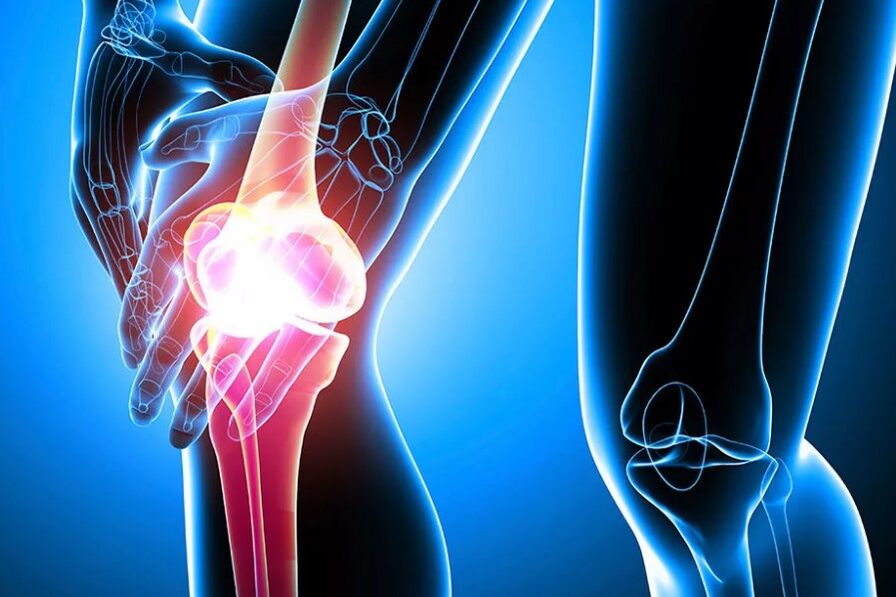
What the word arthritis means and what is its synonyms?However, this description is not completely accurate, as arthritis in the joint there are some inflammatory changes.In English countries, our "articulation in the overwhelming majority of cases is called arthritis (arthritis), that is, inflammatory disease of the joints, while we usually call arthritis, joint damage to rheumatic diseases,Most often (from the Greek words "Osteo" - bone, "article" - arthritis, that is, non -inflammatory articular and bone disease).Question: "First of all, articulation was diagnosed with me and now osteoarthritis is already writing. Is it really so bad?"In fact, arthritis and arthritis are synonymous and your doctors talked about the same thing.
As we have already noticed at the beginning, with arthritis (osteoarthritia), the cartilage is gradually destroyed and the bones are gradually involved in the process.By bone article, a section of hardening (condensation) first appears, as a result of the loss of the properties that absorb shock.Then there are points along the edges of the bone (extracts), which are often called "
Salt deposits
"- In fact, with ordinary articulation, there are no salts salts.With a further course of the disease, the bone begins to bend, to deform, to form cysts: often the disease is called deforming arthritis In old medical books, sometimes you can find the phrase "arthritis deformation", but now it is almost never used.παραμορφωτική αρθρίτιδα (Οστεοαρθρωμένη). Στα παλιά ιατρικά βιβλία, μερικές φορές μπορείτε να βρείτε τη φράση "παραμόρφωση της αρθρίτιδας", αλλά τώρα δεν χρησιμοποιείται σχεδόν ποτέ.
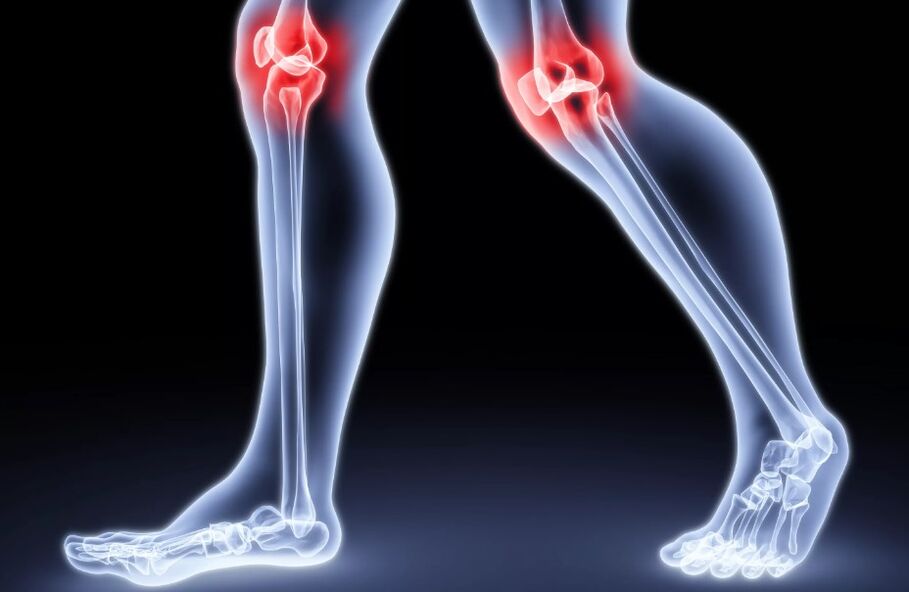
The exact causes of arthritis development were considered unknown for a long time, so there is another name for this disease - Idiopathic arthritis , that is, the article, which emerged for unknown reasons or spontaneously.Of course, now scientists no longer consider arthritis in a mystery and the reasons why the reasons for its development are known.More about the causes of arthritis, on what primary and secondary arthritis is below.The articulation of the hip joint is called Koromia (from the word "Coxa" - hip), the ankle joint - CRUROSTEOARTHRITIS ("cruuris" - lower leg), knee -
ginning ("Gene" - knee).In most cases, articulation affects both knee joints, while one of the joints can be more damaged.In this case, the diagnosis sounds like a bilateral fertilizer with dominant damage to the right (or left) knee joint.Often, not one, but several joints are affected by arthritis, so they use another term - polyseoiarti
which means the defeat of the three or more joints (two symmetrical, for example, both the knee and the others).In this case, the diagnosis is usually heard as follows: Polyosteoi with a dominant lesion in knee joints (or one of them).Why the arthritis of the knee joint occurs? The arthritis of the knee joint is different.Depending on the causes of its appearance, the primary and secondary arthritis is distinguished.With age, cartilage information slows down and the destruction of the cartilage, called the process of degradation or degeneration, begins to prevail.που σημαίνει την ήττα των τριών ή περισσοτέρων αρθρώσεων (δύο συμμετρικές, για παράδειγμα, τόσο το γόνατο, όσο και κάποιες άλλες). Σε αυτή την περίπτωση, η διάγνωση συνήθως ακούγεται ως εξής: Πολυοστεοαρνία με κυρίαρχη βλάβη στις αρθρώσεις των γόνατος (ή ένα από αυτά).
Γιατί εμφανίζεται η αρθρέωση της άρθρωσης του γόνατος;
Η αρθρίτιδα της άρθρωσης του γόνατος είναι διαφορετική. Ανάλογα με τις αιτίες της εμφάνισής της, διακρίνεται η πρωτογενή και η δευτερογενής αρθρίωση.
Πρωτογενή αρθρίτιδα της άρθρωσης του γόνατος
Ο αρθρικός χόνδρος καταστρέφεται και ενημερώνεται συνεχώς και κανονικά αυτές οι διαδικασίες είναι ισορροπημένες. Με την ηλικία, η ενημέρωση του χόνδρου επιβραδύνεται και η καταστροφή του χόνδρου, η οποία ονομάζεται διαδικασία υποβάθμισης ή εκφυλισμού, αρχίζει να επικρατεί.
The process of synthesizing and destroying cartilage is normally balanced.If degeneration begins to prevail, then the arthritis of the knee joint will begin
In most cases, the degeneration of the cartilage, that is, the development of the articulation, occurs after 45-50 years, but sometimes article can grow in 20 years.Fortunately, the development of articulation at such a young age is extremely rare.

People are prone to knee joint arthritis to a greater or lesser degree.As a rule, if article is resulted in, then at the age of 40-60, and if there is no arthritis up to the age of 60, then it will probably no longer be or rather the arthritis will be insignificant (some degenerative changes in knee joint are found in all elderly, but they are expressed by them.90%will be signs of articulation, but not everyone feels their knees as problematic.This is especially true for men who often already "severe" arthritis do not occur or cause minimal suffering.Primary arthritis occurs spontaneously, ie without launch factors, so it is called Idiopathic, which we talked earlier.Thus, we have already discovered that age is one of the main factors that determine the development of arthritis, as cartilage processes begin to prevail with age.Each fourth person over 55 years of age suffer from knee joints.But we also noted that with age, arthritis does not grow on everyone.So there are other reasons.Before listing them, we note that there is no main, main reason.Arthritis of the knee joint develops for the causes, while some play a big role, while others - less.
Είναι σημαντικό να σημειωθεί ότι εάν παίρνετε και φτιάξετε ακτινογραφία σε όλους τους ανθρώπους, για παράδειγμα 60 ετών, τότε σχεδόν το 90%θα είναι σημάδια αρθρίσεως, αλλά δεν αισθάνονται όλοι τα γόνατά τους ως προβληματικά. Αυτό ισχύει ιδιαίτερα για τους άνδρες που συχνά ήδη "σοβαρή" αρθρίτιδα δεν εμφανίζονται ή προκαλούν ελάχιστη ταλαιπωρία.
Η πρωτοβάθμια αρθρίωση εμφανίζεται αυθόρμητα, δηλ. Χωρίς παράγοντες εκτόξευσης, επομένως ονομάζεται Idiopathic, για τους οποίους μιλήσαμε νωρίτερα.
Έτσι, έχουμε ήδη ανακαλύψει ότι η ηλικία είναι ένας από τους κύριους παράγοντες που καθορίζουν την ανάπτυξη της αρθρίδας, καθώς οι διαδικασίες εκφυλισμού χόνδρου αρχίζουν να επικρατούν με την ηλικία. Κάθε τέταρτο άτομο άνω των 55 ετών πάσχει από αρθρώσεις των αρθρώσεων του γόνατος. Αλλά σημειώσαμε επίσης ότι με την ηλικία, η αρθρίωση δεν αναπτύσσεται σε όλους. Υπάρχουν λοιπόν άλλοι λόγοι. Πριν τα απαριθμήσουμε, σημειώνουμε ότι δεν υπάρχει κύριος, κύριος λόγος. Η αρθρίτιδα της άρθρωσης του γόνατος αναπτύσσεται όσον αφορά τις αιτίες, ενώ κάποιοι διαδραματίζουν μεγάλο ρόλο, ενώ άλλοι - λιγότερο.
Floor. Most often, knee joint women suffer from women.The exact reasons for this are unknown, but you can try to explain the following reasons.On average, women's life expectancy is greater than in men and, consequently, the average elderly woman will express more degenerative processes.In addition, body weight in women is on average slightly higher.The size of the bone in women is less than in men and, in combination with higher body weight, this leads to higher pressure on the knee joint and, consequently, a more intense mechanical cartilage destruction.In the vast majority of cases in women, arthritis begins to occur after the cessation of menstruation and, possibly, estrogen deficiency determines the development of the articles.Note that attempts to deal with the knee articulation in women after menopause by estrogen, of course, are undertaken, but so far they are not successful.
Weight. Of course, the greater the body weight, the greater the load to be transferred to the knee joints.In addition, overweight reduces physical activity and leads to the weakness of the hip muscles.For a more active composition of cartilage, there are necessary movements (without excessive pressure) and a sedentary lifestyle, the processes of the cartridge cartridge begin to prevail.Hip muscles are important knee joint stabilizers and with the weakness of these muscles, the movement in the knee joint becomes more painted, which accelerates cartilage destruction.In general, these processes can be described as a vicious cycle: the greater the body weight, the faster the knee joint is destroyed, the greater the pain, the more difficult it is to move, which leads to excess body weight again.
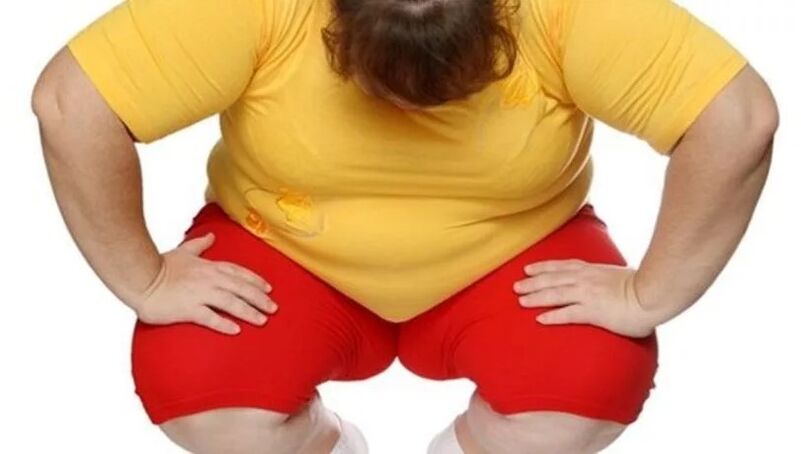
A vicious cycle of obesity and arthritis of the knee joint
On the other hand, only arthritis of the knee joint develops only among full people - those who have no obesity can also suffer from arthritis.Again, this is due to the fact that arthritis has no reason.
Inheritance.It has long been observed that knee joints is a "family" disease.If you have arthritis or your parents, then, unfortunately, the probability of this disease is high with you.Scientists have discovered many gene characteristics that are responsible for, for example, the individual characteristics of the main cartridge structure of the cartridge - collagen, but, unfortunately, so far these discoveries have no practical importance, because we cannot affect its prevention or treatment.There is evidence that arthritis legacy is transmitted along the female line, which partly explains their high tendency to this disease.The primary arthritis of the knee joint is not only occurs for one reason, but only from the whole.At the same time, the arthritis of the knee joint is to one or another in almost all people over 60 years, but the severity of the arthritis is very different and there is not always arthritis in radiography.In fact, it is even more difficult: there is no pain in the knee joint in an elderly person or, in addition, at the age of 40-60 years, it will be accompanied by changes in the radiography characteristic of the articular. For example, scientists have found that 76% of older people with knee pain complaints found arthritis.That is, there is no knee joint pain in an elderly person is necessarily arthritis of the knee joint.
Η πρωτοβάθμια αρθρέωση της άρθρωσης του γόνατος δεν εμφανίζεται μόνο για έναν λόγο, αλλά μόνο από το σύνολό τους. Ταυτόχρονα, η αρθρέωση της άρθρωσης του γόνατος είναι σε ένα ή άλλο βαθμό σε όλους σχεδόν τους ανθρώπους άνω των 60 ετών, αλλά η σοβαρότητα της αρθρίδας είναι πολύ διαφορετική και δεν υπάρχει πάντοτε η αρθρίωση στην ακτινογραφία. Στην πραγματικότητα, είναι ακόμα πιο δύσκολο: δεν υπάρχει πόνος στην άρθρωση του γόνατος σε ηλικιωμένο ή, επιπλέον, σε ηλικία 40-60 ετών θα συνοδεύεται από αλλαγές στην ακτινογραφία που χαρακτηριστικό της αρθρούς.
Για παράδειγμα, οι επιστήμονες έχουν διαπιστώσει ότι το 76% των ηλικιωμένων με καταγγελίες πόνου στα γόνατα στην ακτινογραφία βρήκε την αρθρίτιδα. Δηλαδή, δεν υπάρχει πόνος στην άρθρωση του γόνατος σε ένα ηλικιωμένο άτομο είναι αναγκαστικά αρθρίτιδα της άρθρωσης του γόνατος.At the same time, among all the elderly with arthritis of the knee joints found in x -ray, only 81% will make pain complaints.That is, there is not always existing arthritis.It happens that changes in x -ray are completely insignificant and the pain is strong and occurs in the opposite direction: the joint is completely destroyed in radiography and a person can lead a bicycle, work with yoga, working as Malarus and such cases thatof the knee affected by arthritis from the interior.The blue arrow marked the outer part of the joint and the orange - the interior of the joint.Pay attention to how much the gap between the bones is inside: the cartilage is not visible to the radiography and this gap means cartilage.In this case, there is no practical cartilage inside the knee joint and the bone is already rubbed in the bone.Since articulation often affects both knee joints, that is, it is bilateral, both legs begin to be distorted and a foot deformation (Varior deformation).Δηλαδή, δεν υπάρχει πάντα η υπάρχουσα αρθρίωση.
Αυστηρά μιλώντας, δεν υπάρχει υποχρεωτική σύνδεση της σοβαρότητας του πόνου με τη σοβαρότητα της αρθρίσεως της άρθρωσης του γόνατος στην ακτινογραφία. Συμβαίνει ότι οι αλλαγές στην ακτινογραφία είναι εντελώς ασήμαντες και ο πόνος είναι ισχυρός και συμβαίνει με την αντίθετη κατεύθυνση: η άρθρωση καταστρέφεται πλήρως στην ακτινογραφία και ένα άτομο μπορεί να οδηγήσει ένα ποδήλατο, να ασχολείται με τη γιόγκα, να εργάζεται ως Malarus και τέτοιες περιπτώσεις που συναντάμε σχεδόν κάθε μέρα.
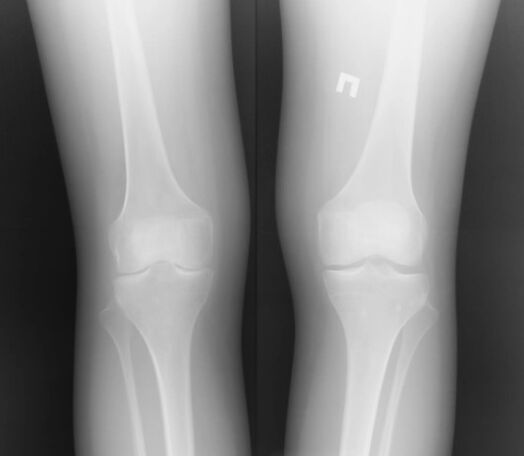
Πιο συχνά, η αρθρέωση της άρθρωσης του γόνατος αρχίζει με το εσωτερικό (μεσαίο) τμήμα.
Η ακτινογραφία της άρθρωσης του γόνατος που επηρεάζεται από την αρθρίτιδα από το εσωτερικό. Το μπλε βέλος σηματοδότησε το εξωτερικό τμήμα της άρθρωσης και το πορτοκαλί - το εσωτερικό της άρθρωσης. Δώστε προσοχή στο πόσο ήδη το χάσμα μεταξύ των οστών είναι από μέσα: ο χόνδρος δεν είναι ορατός στην ακτινογραφία και αυτό το κενό σημαίνει χόνδρο. Σε αυτή την περίπτωση, δεν υπάρχει πρακτικά χόνδρος στο εσωτερικό της άρθρωσης του γόνατος και το οστό έχει ήδη τρίβεται στο οστό.
Με τη σταδιακή τριβή του χόνδρου από το εσωτερικό της άρθρωσης του γόνατος, το πόδι αρχίζει να λυγίζει. Δεδομένου ότι η αρθρέωση συχνά επηρεάζει και τις δύο αρθρώσεις του γόνατος, δηλαδή είναι διμερής, και τα δύο πόδια αρχίζουν να στρεβλώνονται και εμφανίζεται μια παραμόρφωση του ποδιού Ο (παραμόρφωση Varior).
Λιγότερο συχνά (σε περίπου 10% των περιπτώσεων), τα εξωτερικά τμήματα της άρθρωσης επηρεάζονται από την αρθρίωση και στην περίπτωση αυτή αρχίζει η παραμόρφωση σε σχήμα Χ (valgus).
Of course, with curvature, the load on the interior (in -shaped) or external (X -shaped) deformation variants increase even further and article will grow faster and irrevocably.This option is called Patello-Phomary Arthrosion and is, as a rule, due to
slope, underground pattern, side hyper-hypertension symbol in which a separate article is dedicated to our site or after fractures of the patella , which you can also read in a separate article.We will now speak briefly about the options for secondary arthritis After traumatic articulation of the knee joint.The knee joint injuries, of course, do not add a joint of health and almost all of them, in one way or another, increase the risk of articulation.Unfortunately, every person with the gap of meniscus has ever had the possibility of developing arthritis.If an average (internal) meniscus is damaged, then article will probably grow inside the knee joint.And, therefore, if the external meniscus explodes, then arthritis will develop in the external joint of the joint.Note that the meniscus rupture does not always necessarily lead to arthritis, the likelihood of the development of Auls.Of course, the more the meniscus is damaged, the greater the risk of arthritis.
Δευτερεύουσα αρθρέωση της άρθρωσης του γόνατος
Η αρθρέωση της άρθρωσης του γόνατος μπορεί επίσης να αναπτυχθεί λόγω συγκεκριμένων αιτιών, στην περίπτωση αυτή η αρθρίτιδα ονομάζεται δευτερεύουσα. Τώρα θα μιλήσουμε εν συντομία για τις επιλογές για δευτερογενή αρθρίτιδα.
Μετά την τραυματική αρθρέωση της άρθρωσης του γόνατος. Οι τραυματισμοί της άρθρωσης του γόνατος, φυσικά, δεν προσθέτουν μια άρθρωση της υγείας και σχεδόν όλοι τους, με τον ένα ή τον άλλο τρόπο, αυξάνουν τον κίνδυνο αρθρέσεως.
Ένας από τους πιο συνηθισμένους τραυματισμούς της άρθρωσης του γόνατος είναι η ρήξη του Menisci, η οποία είναι αφιερωμένη σε ξεχωριστό άρθρο στην ιστοσελίδα μας. Δυστυχώς, κάθε άτομο με το κενό του μηνίσκου είχε ποτέ την πιθανότητα να αναπτύξει την αρθρίωση ποτέ. Εάν ένας μέσος (εσωτερικός) μηνίσκος είναι κατεστραμμένος, τότε η αρθρέωση θα αναπτυχθεί μάλλον στο εσωτερικό της άρθρωσης του γόνατος. Και, κατά συνέπεια, εάν ο εξωτερικός μηνίσκος εκρήγνυται, τότε θα αναπτυχθεί η αρθρίωση στην εξωτερική άρθρωση της άρθρωσης. Σημειώστε ότι η ρήξη του μηνίσκου δεν οδηγεί πάντα αναγκαστικά στην αρθρίωση, την πιθανότητα ανάπτυξης του AULS. Φυσικά, όσο περισσότερο ο μηνίσκος είναι κατεστραμμένος, τόσο μεγαλύτερος είναι ο κίνδυνος αρθρίδας.
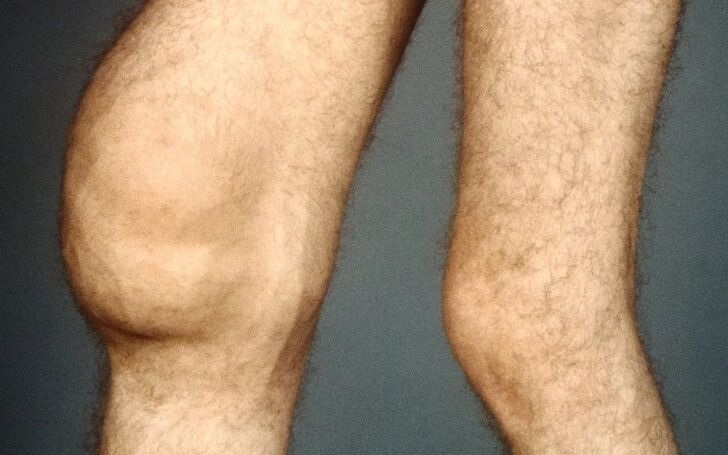
Another reason for the development of articulation of the knee joint is the rupture of the joints, for example, a rupture of the front cross -joint.As a result of the rupture of the joint in the joint, volatility may occur, which will, of course, lead to damage to cartilage and the development of articulation.Of course, cartilage damage depends on the degree of instability, which may be different.Almost any endogenous fracture is accompanied by fragmentation of fragments and thus the shape of the articular surface changes.The step that appears as a result of the displacement inevitably leads to the progressive destruction of the cartilage and the appearance of the articulation.Of course, the heavier fracture, the greater the intra -epitome of fragments, the more the cartilage is damaged and the risk of arthritis is higher.After the heavy multiple crushed fractures of the tibial tubers, arthritis develops in almost 100% of cases, even despite the perfect performed surgery of osteosynthesis (bone fragrances and fastening with screws, plates, etc.)
Ένας πολύ βαρύτερος τραυματισμός του αρθρώματος του γόνατος είναι ένα κάταγμα των κνημιαίων της κνήμης ή κατάγματος των μηριαίων κονδύλων εάν η γραμμή θραύσης εισέλθει στην αρθρική επιφάνεια, τότε ένα τέτοιο κάταγμα ονομάζεται ενδοαρθική. Σχεδόν οποιοδήποτε ενδογενές κάταγμα συνοδεύεται από μετατόπιση θραυσμάτων και έτσι το σχήμα της αρθρικής επιφάνειας αλλάζει. Το βήμα που εμφανίζεται ως αποτέλεσμα της μετατόπισης οδηγεί αναπόφευκτα στην προοδευτική καταστροφή του χόνδρου και στην εμφάνιση της αρθρίσεως. Φυσικά, το βαρύτερο κάταγμα, τόσο μεγαλύτερο είναι το ενδοεπιχειώδες κάταγμα των θραυσμάτων, τόσο περισσότερο ο χόνδρος είναι κατεστραμμένος και ο κίνδυνος αρθρίτιδας είναι υψηλότερος. Μετά από τα βαριά πολλαπλά θρυμματισμένα κατάγματα των κνημιαίων κονδύλων, η αρθρίτιδα αναπτύσσεται σε σχεδόν το 100% των περιπτώσεων, ακόμη και παρά την τέλεια εκτελεσμένη χειρουργική επέμβαση οστεοσυνθέσεως (εξάλειψη θραυσμάτων οστών και στερέωση με βίδες, πλάκες κ.λπ.)


















































